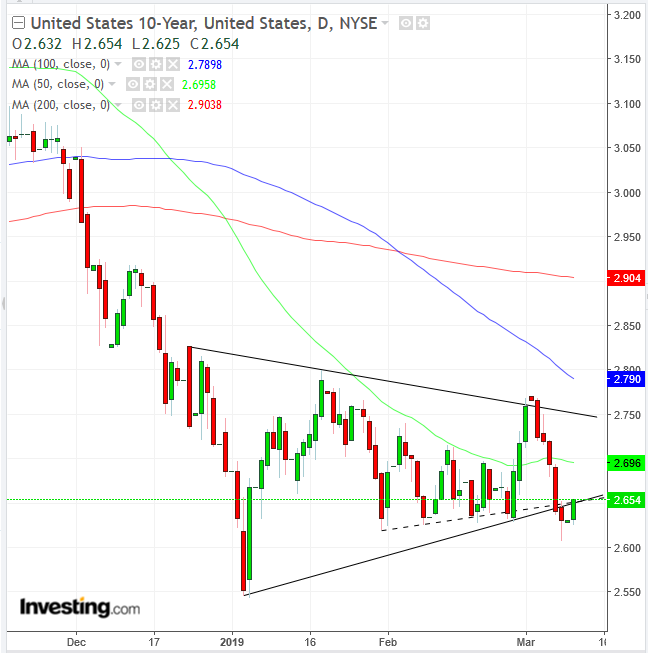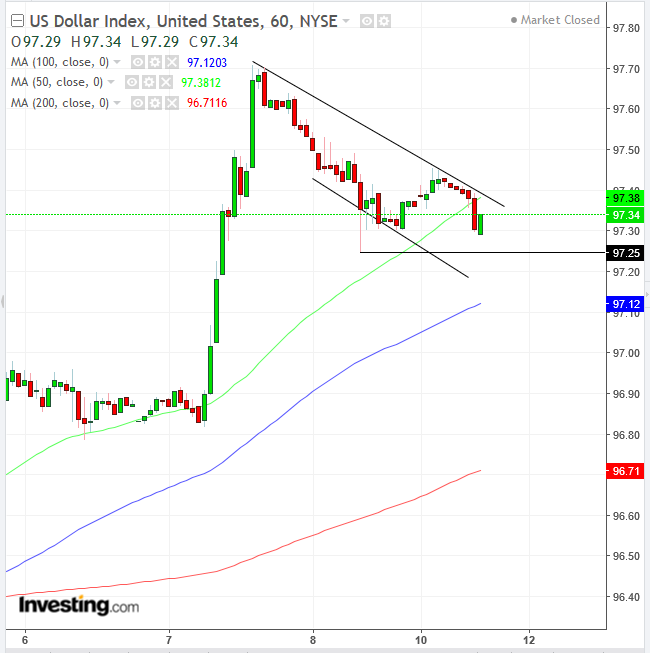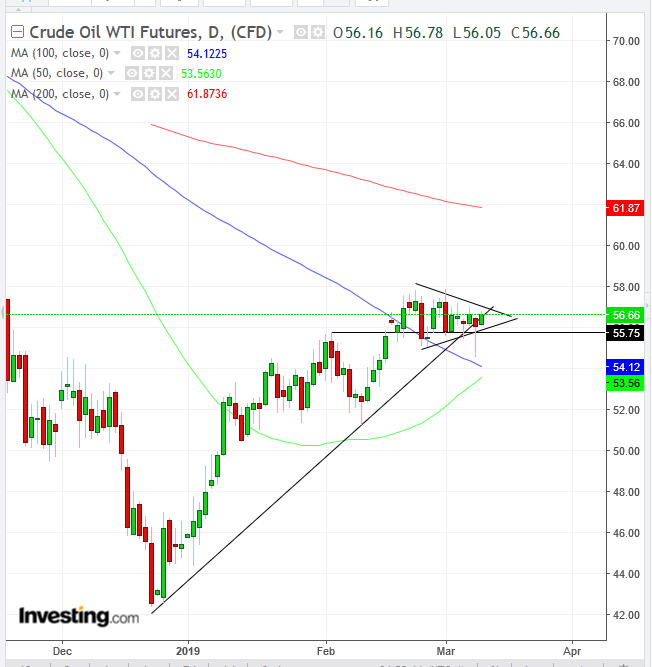- Global stocks climb as traders treat last week's sharp losses as buying dip
- China outperforms due to boosted outlook for stimulus
- Dow futures struggle on Boeing's setback
- U.S. yields rise on Powell’s dovish signals
Key Events
European stocks, alongside futures on the S&P 500 and NASDAQ 100, followed Asian equities higher, as traders appear to have decided the worst trading week of the year was a buying opportunity.
The STOXX Europe 600 climbed with oil and gas producers for the first session after a three-day selloff.
Futures contracts on the Dow pointed to a much less solid opening of the industrial index, after Sunday’s Boeing (NYSE:BA) 737 Max 8 crash pressured prices lower. At 11.26% of total weighting, the U.S. aviation company is the heaviest component of the Dow, as well as almost double the heft of the runner up, UnitedHealth Group (NYSE:UNH), which accounts for 6.32 percent of the index.
During the earlier Asian session, most indices threw a last ditch attempt to close in the green, after posting a mixed performance on the prevailing perception that U.S.-China trade talks are broadly stalling. China’s Shanghai Composite (+1.92) still managed to outperform, confusing the market narrative. However, as we argued last week, the Chinese bullishness is being favored by the government's newly announced stimulus measures, which offset ongoing noise on trade negotiations. Disappointing loan and money supply data boosted the outlook for the government to increase its efforts to kick start the slowing economy. One could point out that China most likely will not want to give the U.S. president any further bargaining advantage due to the contraction of its own economy.
Hong Kong’s Hang Seng gained 0.97 percent. Japan’s Nikkei climbed 0.47 percent, and South Korea’s KOSPI held onto positive territory (+0.03%). Australia’s S&P/ASX 200 was the only one to remain down under, falling 0.38%.
It should be viewed, overall, as a solid session, if we consider it followed a markedly downbeat week for global stocks, capped by the weakest U.S. job growth since Sep. 2017.
Global Financial Affairs

Fed Chair Jerome Powell said in an interview on CBS’ 60 Minutes that the central bank considers the current interest rate “appropriate” and “roughly neutral”—thereby presumably in sync with inflation, neither boosting the economy nor slowing it down—and isn't in any hurry to change its interest rate policy. Investors sold off Treasurys after Powell's remarks, boosting yields on 10-year bonds.

Meanwhile, the dollar pared Friday’s losses. After a surge of 0.9% in 10 hours on Thursday, the falling consolidation since may be the setup for another rally, after an upside breakout of a falling flag, bullish in an uptrend.

Oil jumped from the bottom of its bullish pattern ahead of the International Energy Agency’s Oil 2019 report and OPEC’s monthly market briefing, amid the recent seesaw between U.S. production, Saudi cuts and bullish outlook.
Up Ahead
- U.S. President Donald Trump is expected to release his proposed fiscal budget for 2020 on Monday.
-
- The U.K. House of Commons votes on May’s revised Brexit deal on Tuesday, 17 days before the country is formally scheduled to leave the EU.
- Bank of Japan Governor Haruhiko Kuroda will speak on Friday, after a monetary policy decision.
Market Moves
Stocks
- The STOXX 600 gained 0.4 percent, the largest climb in almost three weeks.
- Futures on the S&P 500 eked out 0.2 percent, the biggest rise in more than a week.
- The MSCI Asia Pacific Index climbed 0.5 percent, the largest increase in two weeks.
- The MSCI Emerging Market Index edged 0.6 percent higher, the biggest increase in two weeks.
Currency
- The Dollar Index gained less than 0.05 percent.
- The euro rose 0.1 percent to $1.1247.
- The Japanese yen slid 0.1 percent to 111.26 per dollar.
- The MSCI Emerging Markets Currency Index ticked 0.2 percent higher, the biggest increase in two weeks.
- The Australian dollar gained 0.1 percent to 0.705 per dollar.
Bonds
- The yield on 10-year Treasurys rose two basis points to 2.65 percent, the first advance in more than a week.
- Germany’s 10-year yield climbed less than one basis point to 0.07 percent.
- Britain’s 10-year yield gained less than one basis point to 1.193 percent.
- The spread of Italy’s 10-year bonds over Germany’s increased less than one basis point to 2.438 percentage points.
Commodities
- The Bloomberg Commodity Index gained 0.2 percent.
- Brent crude rose 0.9 percent to $66.31 a barrel, the highest in more than a week on the largest advance in a week.
- LME copper climbed 0.4 percent to $6,419.00 per metric ton.
- Gold dropped 0.1 percent to $1,296.79 an ounce. Investors are now wondering whether Friday’s high above $1,300 has more leeway to break out from the recent range-bound declines, amid heightened global growth fears.
